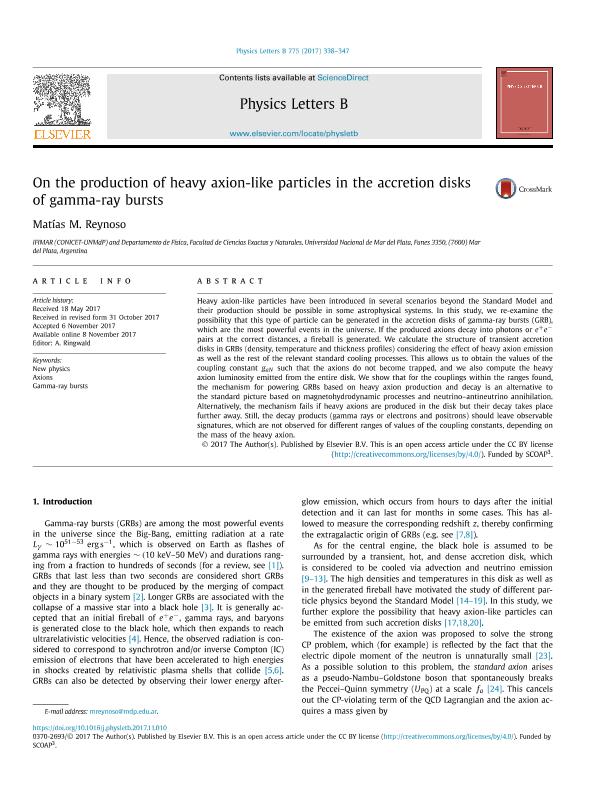Artículo
On the production of heavy axion-like particles in the accretion disks of gamma-ray bursts
Fecha de publicación:
12/2017
Editorial:
Elsevier Science
Revista:
Physics Letters B
ISSN:
0370-2693
Idioma:
Inglés
Tipo de recurso:
Artículo publicado
Clasificación temática:
Resumen
Heavy axion-like particles have been introduced in several scenarios beyond the Standard Model and their production should be possible in some astrophysical systems. In this study, we re-examine the possibility that this type of particle can be generated in the accretion disks of gamma-ray bursts (GRB), which are the most powerful events in the universe. If the produced axions decay into photons or e+e− pairs at the correct distances, a fireball is generated. We calculate the structure of transient accretion disks in GRBs (density, temperature and thickness profiles) considering the effect of heavy axion emission as well as the rest of the relevant standard cooling processes. This allows us to obtain the values of the coupling constant gaN such that the axions do not become trapped, and we also compute the heavy axion luminosity emitted from the entire disk. We show that for the couplings within the ranges found, the mechanism for powering GRBs based on heavy axion production and decay is an alternative to the standard picture based on magnetohydrodynamic processes and neutrino–antineutrino annihilation. Alternatively, the mechanism fails if heavy axions are produced in the disk but their decay takes place further away. Still, the decay products (gamma rays or electrons and positrons) should leave observable signatures, which are not observed for different ranges of values of the coupling constants, depending on the mass of the heavy axion.
Palabras clave:
NEW PHYSICS
,
AXIONS
,
GAMMA-RAY BURSTS
Archivos asociados
Licencia
Identificadores
Colecciones
Articulos(IFIMAR)
Articulos de INST.DE INVESTIGACIONES FISICAS DE MAR DEL PLATA
Articulos de INST.DE INVESTIGACIONES FISICAS DE MAR DEL PLATA
Citación
Reynoso, Matias Miguel; On the production of heavy axion-like particles in the accretion disks of gamma-ray bursts; Elsevier Science; Physics Letters B; 775; 12-2017; 338-347
Compartir
Altmétricas




